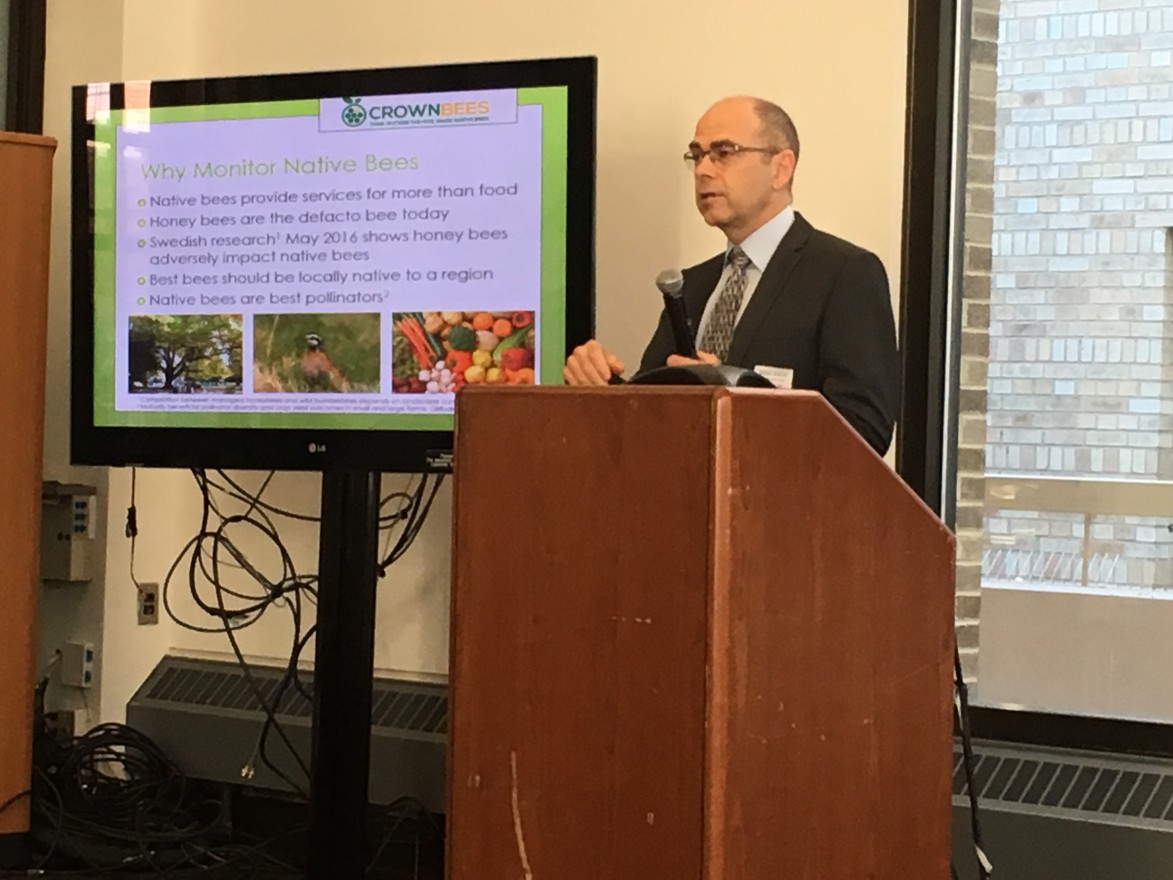
Dave Hunter, founder of Crown Bees, a bee nursery and supply business in Woodinville, Wash., speaks at the USDA event. (Eric Englert/Medill)

Dave Hunter, founder of Crown Bees, a bee nursery and supply business in Woodinville, Wash., speaks at the USDA event. (Eric Englert/Medill)
By Eric Englert
WASHINGTON—Native bees contribute an estimated $3.5 billion to the U.S. economy each year, but their dwindling numbers must be addressed to avoid possible extinction of some species, Department of Agriculture officials said June 28.
Among all native, or U.S.-born, bee species, more than half—about 750—are declining in population and nearly one in four is imperiled and at increasing risk of extinction, a recent study by the Center for Biological Diversity said.
The prolific pollinators are vital to natural ecosystems and enhance the yield of fruits, vegetables, nuts, specialty crops, horticultural plants, and native wildflowers. Commercial tomato growers rely heavily on native bees to pollinate their crops, said Mary Purcell of the National Institute of Food and Agriculture.
“When we are counting the density of native bees in a crop, we are finding significantly more yield, and we are talking about native bees that are local to an area, to a region, and are the most prolific for that season,” said Dave Hunter of Crown Bees, a Washington-based beekeeping business.
“The World Resource Institute suggests that Between 2016 and 2050 the world needs 69 percent more calories,” he said, “and we can do that with bees.”
President Barack Obama’s landmark 2014 Pollinator Memorandum created a task force from the USDA, the Environmental Protection Agency, and a dozen other government agencies, to work together on a plan to restore the native bee population. The 2018 farm bill specifies $75 million for the creation and implementation of the plan.
In 2015, the task force released its research plan to “develop baseline data, assess trends in pollinator populations, expand bee identification capacities, and expand collaboration between government and university scientists.”
The Government Accountability Office issued a report last year that concluded, ‘‘The USDA has increased monitoring of honey bee colonies managed by beekeepers to better estimate losses nationwide but does not have a mechanism in place to coordinate the monitoring of wild, native bees.”
This year, the USDA and others are holding meetings to gather outside testimony as the task force finalizes its plan, pending funding from the farm bill.
At a recent meeting, University of Virginia graduate student Kathryn LeCroy emphasized the importance of the citizen scientist in monitoring bee losses.
“We engaged 98 citizen scientists throughout Virginia, with participants using pan trap data and trap nesting data,” LeCroy said. “The … study reveals that Virginians are passionate about bee data and the demand for more knowledge on bees is strong. They are very interested to see the full results of our study when they come out.”
To get the needed nationwide data, studies like LeCroy’s need to be standardized and conducted in every state because there are many species of bees to tabulate and only a handful of bee experts to evaluate the samples, said Jonathan Mawdsley, science advisor at the Association of Fish and Wildlife Agencies.
The task force next will meet with scientists and farmers as it aims to create a standardized method of tracking native bees.